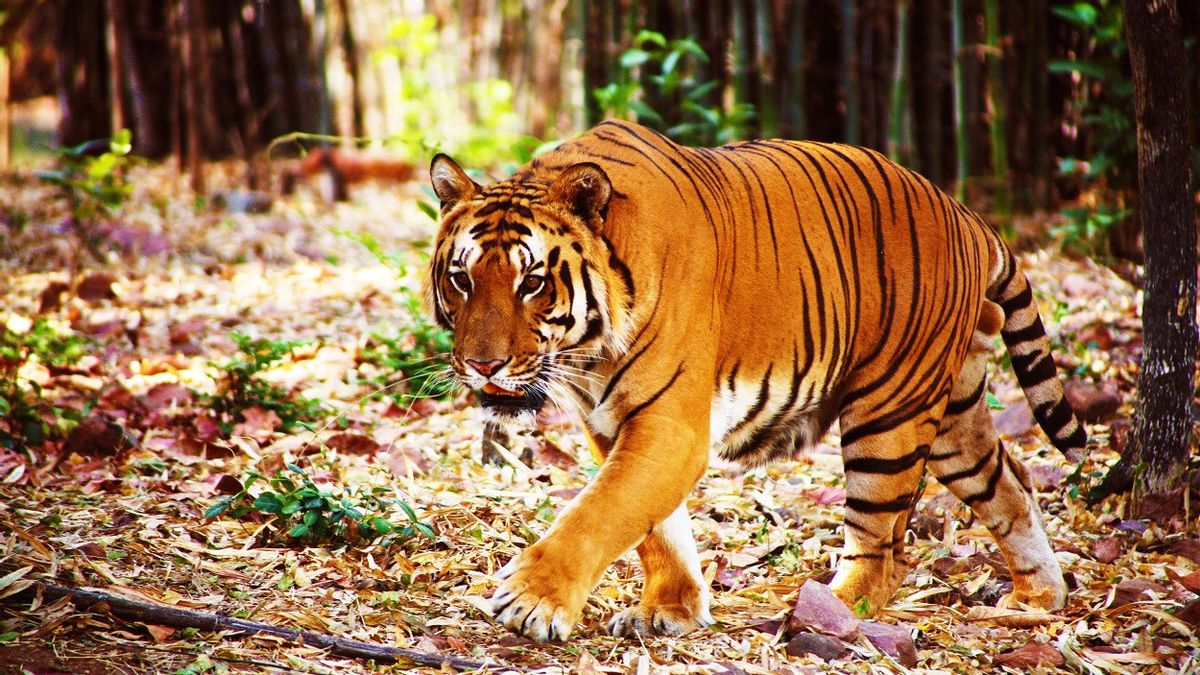JAKARTA - Prime Minister Narendra Modi on Friday praised India's efforts to conserve tigers, but experts say the country needs to look beyond numbers and focus on increasing protected areas and preventing conflicts with humans.
“I appreciate all those who are actively working to protect tigers. It will make you proud that India has 52 tiger reserves covering more than 75,000 square kilometers. Innovative steps are being taken to involve local communities in tiger protection," said PM Modi, on the occasion of International Tiger Day, launching The National News July 30.
The tiger, India's national animal, is a protected species in the country. India has 2,967 tigers in the wild, according to the 2019 census, or two-thirds of the world's population.
The number of tiger reserves has grown to 52 since protected areas were established in 1973 under the Tiger Project, which aims to increase the population in the wild to 4,000 in the next decade.
It is estimated that more than 58,000 tigers roamed India's jungles nearly two centuries ago, but decades of hunting for sport and habitat destruction reduced their numbers to fewer than 2,000 in the 1970s.
It is known that the tiger was placed on the International Union for Conservation of Nature's endangered species list in 1975. New Delhi has invested heavily in awareness raising and conservation actions under Project Tiger.
Last year, the Ministry of Environment allocated three billion rupees (about US$38 million) for the project. Efforts include increased security and stricter wildlife policies, use of information technology and camera traps for monitoring and surveillance, profiling and photographing each animal, and in some cases removing villagers from water catchment areas.
India is also building the world's largest underpass in Madhya Pradesh, a state with about 550 tigers in the country, so that big cats can safely cross highways.
"These numbers represent a huge effort and we have made progress in certain places," Abishek Harihar, a population ecologist and deputy director of Panthera, a feral cat conservation group, told The National.
Despite government efforts, tigers are still an endangered species due to the threat of poaching and habitat loss leading to human-animal conflicts.
Young Environment Minister Ashwini Choubey said this week, more than 329 tigers had died in the country due to poaching and natural and unnatural causes in the past three years.

At least 75 deaths have been recorded this year. Over a three-year period, 68 tiger deaths were attributed to natural causes, five to unnatural causes, 29 to poaching and 30 to "confiscation". More than 200 deaths are still being investigated.
In central Madhya Pradesh, more than 1,000 animals have been killed in the last decade, according to the National Tiger Conservation Authority, a government agency.
Hunting for tigers for body parts, especially claws, teeth, bones and fur, continues due to illegal international market demand, especially in China where they are used in traditional medicines despite prohibitions.
Experts say the government also needs to focus on the eastern and northeastern parts of the country that were once tigers' natural habitat.
“There are many areas that still don't have tigers, especially the eastern and central Indian landscapes such as the states of Jharkhand, Odisha and Chhattisgarh. There is extensive forest cover but little or no tiger population,” explained Harihar.
He blames a lack of political will for decades of violent insurgency in these states, but also on the shrinking habitat of animals such as deer, tigers' natural prey.
Despite all this, India remains a beacon of hope for tiger conservation.
It is the only country to achieve its target of doubling its tiger population by 2022, having joined a global conservation effort with 13 countries — including Bhutan and Nepal — in 2010. By 2006 when the number of tigers in India had fallen to more than 1,400 .
But the growing number of tigers has led to a significant increase in human-animal conflict in the country of 1.3 billion people.
Tigers have killed more than 100 people in India over the past three years, Choubey told Parliament in April. The western state of Maharashtra, which has nearly 400 tigers and five tiger sanctuaries, recorded the most deaths, with 56. In Uttar Pradesh, 17 people died in tiger attacks: eight in 2019, four in 2020 and five last year.
Experts attribute the conflict to habitat loss due to development projects, overpopulation in nature reserves, and human settlements near protected areas that have led tigers to stray in search of food.
Most of the tigers in nature reserves have less protected [buffer] habitats because they are surrounded by human settlements or disturbed by infrastructure development projects.
"If a tiger loses a territorial fight and is driven out of the area, there is a greater chance that it will not survive, or prey on livestock in nearby human habitats," Harihar said.
He said measures to prevent or reduce conflict and community involvement were "very important".
"Local communities and the government need to work together (to make) strong policies around shared land for use by the community and clarity of what goals the area will achieve," he concluded.
The English, Chinese, Japanese, Arabic, and French versions are automatically generated by the AI. So there may still be inaccuracies in translating, please always see Indonesian as our main language. (system supported by DigitalSiber.id)













